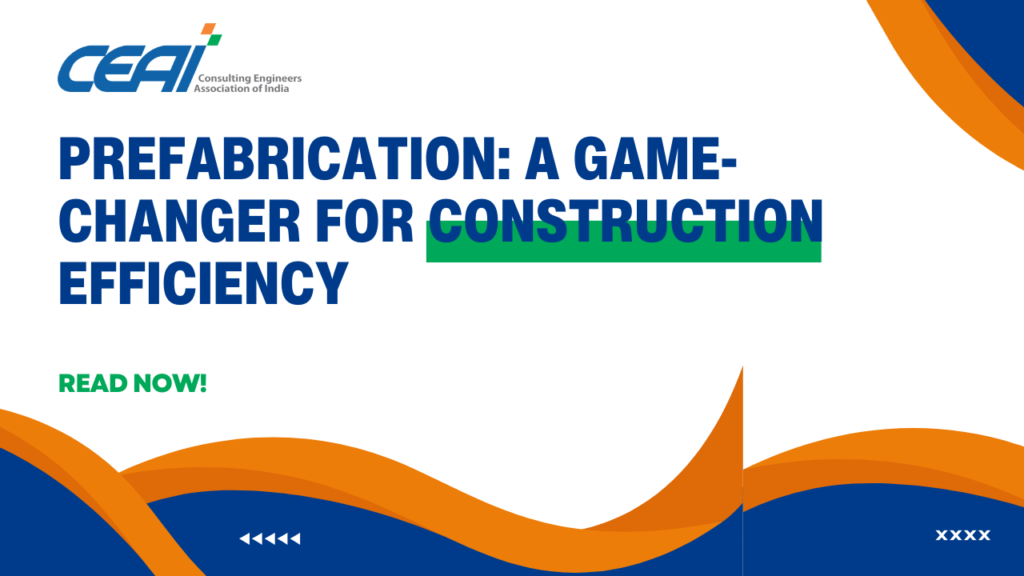
Prefabrication is rapidly transforming the construction industry, offering numerous advantages that enhance efficiency, reduce waste, and improve quality control. By assembling building components off-site and then transporting them to the construction site for final installation, prefabrication introduces a level of precision and speed that traditional construction methods struggle to match. In this blog, we explore how prefabrication is revolutionizing the construction landscape and why it is considered a game-changer for construction efficiency.
The Rise of Prefabrication in Construction
Historical Context
Prefabrication isn’t a new concept. Its roots can be traced back to ancient civilizations, where modular construction methods were used to build complex structures. However, the modern incarnation of prefabrication began gaining traction in the 20th century, particularly with the rise of industrialization and mass production techniques. Today, advancements in technology and materials have propelled prefabrication to the forefront of innovative construction practices.
Technological Advancements
The integration of digital technologies, such as Building Information Modeling (BIM) and 3D printing, has significantly advanced prefabrication. BIM allows for precise planning and coordination, reducing errors and facilitating seamless integration of prefabricated components. 3D printing enables the production of complex geometries and custom components, pushing the boundaries of what can be prefabricated.
Benefits of Prefabrication
Enhanced Efficiency
One of the most compelling advantages of prefabrication is its ability to significantly enhance construction efficiency. Off-site manufacturing allows for simultaneous site preparation and component fabrication, reducing overall project timelines. This parallel processing is particularly beneficial for large-scale projects, where time savings can translate into substantial cost reductions.
Quality Control
Prefabrication offers superior quality control compared to traditional on-site construction. Manufacturing in a controlled factory environment minimizes the risks associated with weather conditions, human error, and inconsistent workmanship. Each component undergoes rigorous testing and inspection before being transported to the site, ensuring that high-quality standards are consistently met.
Reduced Waste
Traditional construction methods often result in significant material waste due to on-site cutting, trimming, and adjustments. Prefabrication, on the other hand, optimizes material usage through precise manufacturing processes. This not only reduces waste but also lowers material costs and contributes to more sustainable construction practices.
Overcoming Challenges in Prefabrication
Transportation and Logistics
One of the primary challenges of prefabrication is the transportation of large components from the factory to the construction site. This requires careful planning and coordination to avoid delays and ensure safe delivery. Additionally, logistical considerations, such as road access and crane availability, must be addressed to facilitate the installation of prefabricated elements.
Design and Customization
While prefabrication offers many benefits, it can also present limitations in terms of design flexibility and customization. Standardized components may not always align with unique architectural visions or site-specific requirements. However, advances in modular design and customization options are continuously expanding the possibilities of prefabrication, enabling more tailored solutions.
Skill Development
The shift towards prefabrication necessitates a new skill set for the construction workforce. Workers need training in modular assembly, digital tools, and off-site manufacturing processes. Investing in education and training programs is essential to bridge the skills gap and ensure a smooth transition to prefabricated construction methods.
Prefabrication in Action: Success Stories

Case Study: Modular Housing
Prefabrication has made significant strides in the housing sector, particularly in the development of modular homes. These homes are constructed using prefabricated modules that are assembled off-site and then transported to the construction site for final assembly. This approach has proven highly effective in addressing housing shortages and providing affordable, high-quality housing solutions.
Case Study: Commercial Buildings
Commercial construction projects, such as office buildings and hotels, have also embraced prefabrication. For example, a hotel in New York City was built using prefabricated modules, allowing the project to be completed in a fraction of the time required for traditional construction methods. The result was a high-quality, cost-effective building delivered ahead of schedule.
The Future of Prefabrication

Sustainability
As the construction industry increasingly focuses on sustainability, prefabrication is poised to play a crucial role in reducing the environmental impact of building projects. The precision of prefabrication minimizes waste, and the potential for integrating sustainable materials and energy-efficient systems further enhances its green credentials.
Integration with Smart Technologies
The future of prefabrication will likely see greater integration with smart technologies, such as the Internet of Things (IoT) and artificial intelligence (AI). These technologies can enhance the efficiency of prefabrication processes, improve quality control, and enable real-time monitoring of construction activities.
Expansion Across Sectors
While prefabrication is already making waves in residential and commercial construction, its potential extends to various other sectors, including healthcare, education, and infrastructure. Prefabricated hospitals, schools, and bridges are emerging as viable solutions for rapid, high-quality construction in diverse applications.
Conclusion
Prefabrication is undeniably a game-changer for construction efficiency, offering numerous benefits that enhance project timelines, quality control, and sustainability. By overcoming logistical and design challenges, the industry can fully leverage the potential of prefabrication to revolutionize how we build. For consulting engineers and construction professionals, embracing prefabrication means staying ahead of the curve and delivering innovative, efficient solutions that meet the demands of the modern construction landscape.
